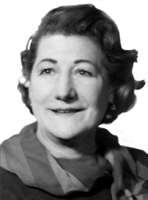
|
The Society of Folk Dance Historians (SFDH)
Teachers' Dance Handbook
[
Home |
About |
Encyclopedia | CLICK AN IMAGE TO ENLARGE |


|
BACKGROUND
Information: A book about the teaching of folk dance and games to children.
Teachers' Dance Handbook Number 1 (Kindergarten to Sixth Year) by Olga Kulbitsky and Frank L. Kaltman
Published by Bluebird Publishing Co., Newark, N.J., 1959
REVIEW
Review by Hugh A. Thurston
The name of this book is a modest one. It contains over 300 large pages packed with information, and could almost have been called a treatise. The main part is the description of about 130 musical games and simple dances arranged in six sections: from "Kindergarten and first year" to "sixth year." The dances are folk and community dances except for two: a minuet and a "festival processional." The rest, except for two historical dances from Playford's collection, are in fact living traditional forms. So far, the book is something like the Helms/Blasche Schultanzbuch, but besides the dances K. and K. have given us a pretty complete analysis of steps, formations, dance-holds, and rhythms, with teaching hints and suggested programmes. This has all been extremely well done except for (i) the part dealing with rhythm and musical notation, throughout which the authors have confused rhythm on the one hand with time and metre on the other, and (ii) the descriptions of ballet (!) positions for feet and arms.
It is this part of the book which has the air of a treatise. Although addressed to teachers of children it is so thorough that it contains something of value for every teacher of this kind of dance.
The dances included can of course only be a selection from the many thousands available. A very good choice of American singing-games and dances is made – and most of the material is of course American. The English dances and games have been well selected and described, too, but the rest of the European dances have not, that is, of the two Scottish dances chosen, one is unknown in Scotland; the other – the highland schottische – is Americanized into a "change-partners" dance; and both, being couple dances, are atypical. The Swedish "Bleking" is described in a very jazzed-up style. But this will matter little to the European reader, who will have his own sources of European dances. American books are expensive by our standards, but this one is well worth having.
DOCUMENTS
- Frank Kaltman, an article.
- Olga Kulbitsky, an article.
This page © 2018 by Ron Houston.
Please do not copy any part of this page without including this copyright notice.
Please do not copy small portions out of context.
Please do not copy large portions without permission from Ron Houston.